Google ads can burn your business to the ground… OR it can be the fastest way to generate revenue with an ROI out of this world! What’s the difference? A great PPC management strategy.
In this guide, you’ll learn how to execute and optimize a winning PPC strategy. From start to finish we’ll detail how to achieve a profitable PPC campaign.
But first, let’s talk about what PPC management is and what it entails for a business owner/marketer such as yourself.
PPC management is when a marketing agency oversees a client’s entire PPC account. From campaigns and ad groups to budget and targeting, they do it all.
A PPC company is usually responsible for the following tasks:
- Keyword research: Using tools to analyze the best keywords to target so the ads are being displayed in front of the target audience that is most likely to convert.
- Competitor analysis: Researching what the client’s competition is doing for PPC. Figuring out where their ads are showing, what keywords they are targeting and what is working best for them.
- Media channels: Selecting which paid media channels to use. These could include Google Ads, Bing Ads, Display Networks, or even Facebook and Instagram advertising.
- Campaign optimization: Monitoring campaign performance and making needed changes to audience targeting, placements, keywords, bid strategies, ad text/image, and much more to ensure good ROI.
- Split testing: Continuous A/B testing of new ads and their respective landing pages.
- Reporting: Presenting PPC performance data in a detailed, yet easy-to-understand format for the client.
Business owners often have to make the tough decision of either hiring an in-house PPC expert or working with a professional PPC agency. Generally speaking, PPC agencies are a great option for business owners who lack the time or resources to manage it themselves.
Now that we’ve gone over what PPC management is, let’s look at what it takes to run PPC ads effectively.
Steps to Managing Paid Advertising Campaigns
1.) Set clear data-driven goals and KPIs
Successful PPC campaigns are judged by their ability to achieve a predetermined result for a specific amount of money.
Without a clear goal you’ll have no idea if your PPC ads are working or not!
The absolute first step… before even touching an ad is to understand your key business metrics (not all of these will apply to your business)
- Customer Lifetime Value (LTV)
- Cost Per Acquisition (CPA)
- Return on Ad Spend (ROAS)
- Average Order Value (AOV)
- Profit Margin
If you need help calculating some of these, use our free PPC tools.
It is paramount you use these metrics as benchmarks for your PPC management efforts. It’s also important you understand how these metrics vary from business to business.
Just because one company has a 500% ROAS doesn’t mean that those same ads would be profitable for another company.
Try to be realistic with your ad expectations. It takes a multitude of testing and research to figure out which ads work and which ones don’t. That being said, don’t expect a 800% ROAS overnight or even within the first few weeks or months.
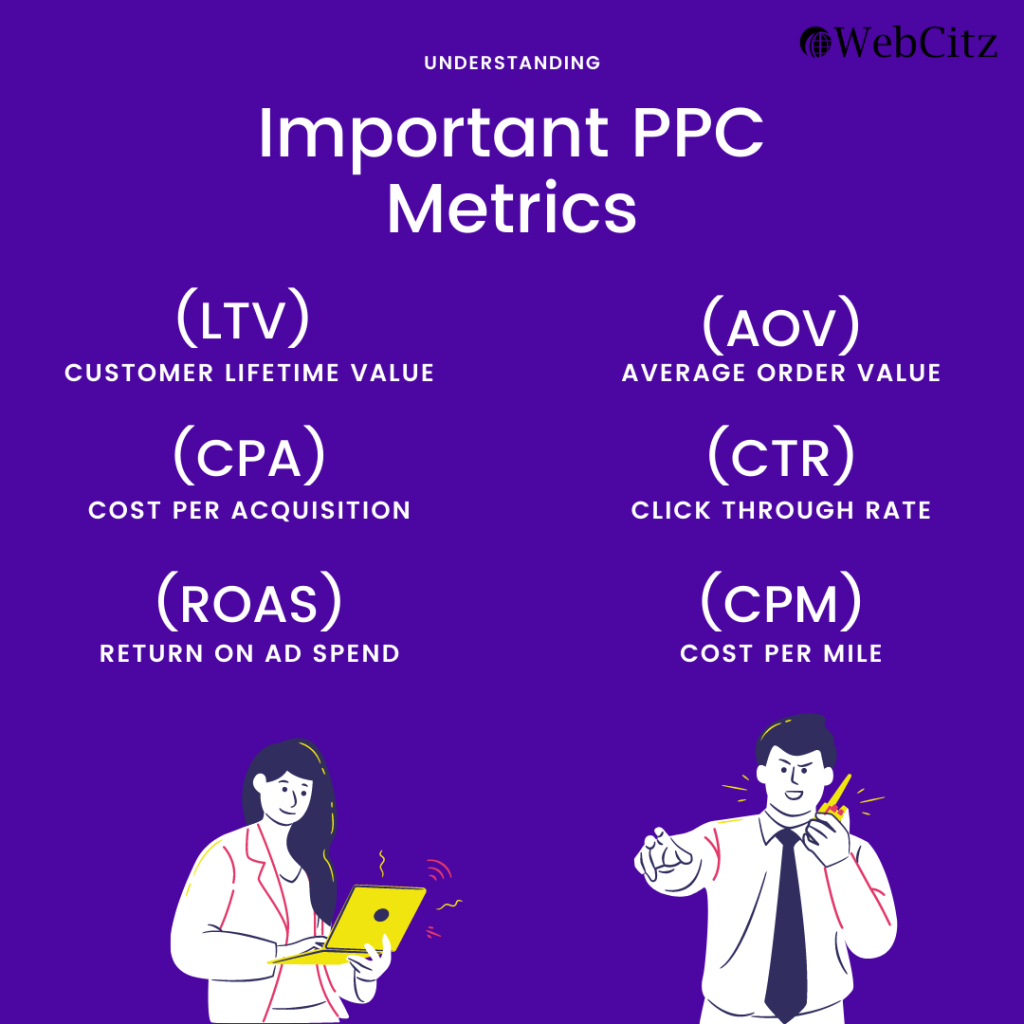
What are some goals you can have for PPC campaigns?
- Increase purchases: If you’re an eCommerce website, getting website visitors that actually convert into customers should be your main priority.
- Generate more leads: If you offer B2B, high ticket offers, consulting services, or just have a sales funnel in place that requires collecting customer information, lead generation is likely your #1 goal. If this is the case your PPC campaigns will need to be tailored to convert visitors into qualified leads for your business.
- Brand awareness: Brand awareness isn’t really recommended for new businesses as it’s a very hard metric to track. But, if you already have a recognizable business you might want to consider brand awareness PPC ads to reach new customers and stay at the top of your current customers’ minds.
Once you have these goals in mind and key business metrics established you can start making PPC campaigns.
Let’s say for example the goal of your PPC management team is to achieve $500,000 in sales by the end of Q1.
If you know that your Average Order Value (AOV) is $240 you can then figure out how many customers you need to acquire to achieve that goal. In this example, it would be 2,083 customers total or 23 customers a day.
Next up is determining ad profitability. There’s no sense in getting 2,000 customers from ads if they costed so much to acquire that you lost money in the end.
So if your $240 order has a profit margin of 40% that means you make roughly $96 per order not including ad costs. Now that you know your margins, your PPC management team needs to keep Cost per Acquisition (CPA) below $96 to be profitable.
With all this in mind, you can begin creating and monitoring ad campaigns that target keywords with adequate search volume and attract the right amount of customers.
2.) Understanding Google PPC insight & structure
Pay attention to Google’s recommended ad changes for higher performance but be wary of following them blindly.
Your PPC goals often vary wildly from Google’s. While you want better ad performance and more sales, Google wants you to spend more money.
Don’t get me wrong, Google provides invaluable performance data on your campaigns and can offer keywords to target, bid strategy changes and much more. Just make sure to understand the suggested changes before clicking Approve.
Once you’ve gone through the initial PPC account setup, you can begin optimizing and structuring your ad campaigns for success. Here’s stuff to keep in mind:
- Keywords: Test a wide variety of keywords and keyword matching options followed up by close monitoring. This includes Broad, Phrase, and Exact match keywords. Be sure to include negative keywords to ensure your ad dollars aren’t being wasted on useless phrases. After some time, revisit the keywords to see the performance, swiftly deleting the money suckers and increasing bids for the winners.
- Campaigns: PPC campaigns and how you structure them in your account are often personal preference, however, there are some basics to understand. A campaign can only target one specific conversion goal, use one bid strategy and one media channel. For example, you can’t target sales and lead simultaneously. Nor can you do a shopping and search network ad in the same campaign.
- Ad copy: Your ad copy must be optimized to attract clicks from potential customers. This requires the use of keywords in the headlines, and quality copywriting that details the product/service, its benefits, urgency, and other selling points.
- Ad extensions: Make your ads appear larger in the search engine results by including ad extensions. These can include site links, callouts, locations, phone numbers, and more. Adding correct ad extensions has been proven to increase click-through rate (CTR) and ad performance.
- Landing pages: Having a specific landing page to drop website visitors to is paramount for PPC success. The landing page should be optimized for conversions, whether that be a sale, contact form, or a phone call. The page also needs to reflect the searcher’s query. If someone searched on Google for PPC management and clicked on your ad, don’t bring them to your website design page or even worse.. your homepage.
- Analytics: Your PPC account and the landing pages you drop visitors to need to be under close surveillance. This will allow you to determine which ads and landing pages are performing well. Once you know what works you can then allocate more budget to it to improve the number of results.
Let’s see an optimized PPC campaign structure in action. Here is the ad example for when I searched “custom meal plans”

The headline of the ad answers my query perfectly. I’m looking for a custom meal plan and the ad says “Create a Meal Plan”. I also see words like “personalized”, “quiz” and “generator” which help me understand how this ad can help me.
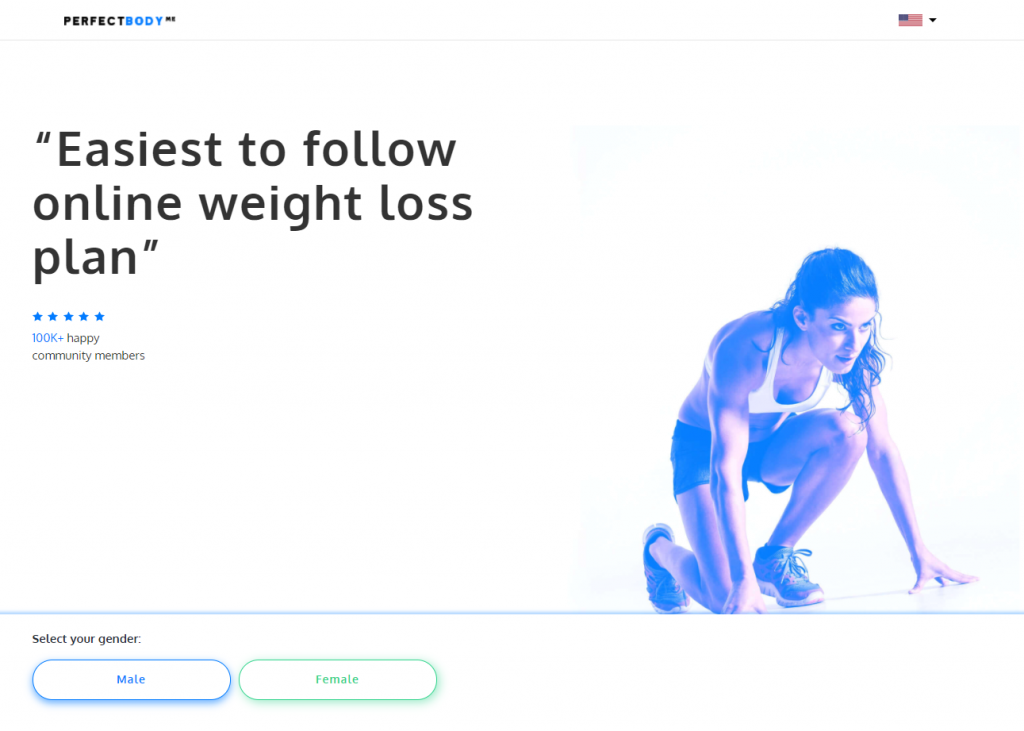
There landing page is straight to the point allowing you to do only 2 things. Start the quiz or leave the page. They also have great social proof from the “100k+ happy community members”

At the end of my quiz I had to enter my email which is great lead generation.
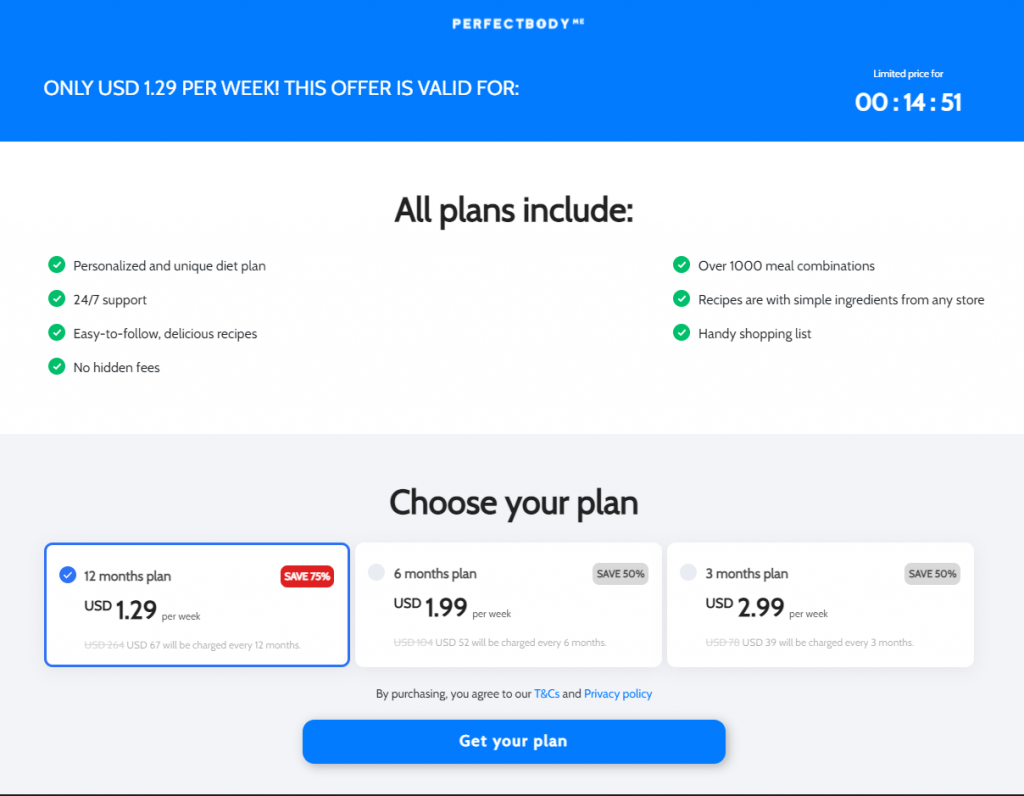
And finally, after answering all the questions and seeing my results they offer me their paid service.
This funnel is perfect for many reasons. The ad matched my search perfectly (good keyword targeting and ad text), the quiz is free to take so there’s low commitment, and all the PPC results are easily measurable. That is crucial.
3.) Always test & scale efficiently
There will never be a better way to determine an ads success than to test it.
Leave your ego at the door when entering a new ad account and begin testing new things to see what sticks. What worked for one PPC account might not work for another.
Over the first 30 day period, it’s important you cast a wide net, testing dozens of audiences, placements, keywords, and ad designs to determine for yourself what shows promise and what doesn’t. The data you collect in these early stages will set the foundation for your long-term strategy.
The more ads you’re able to successfully test and label profitable the easier it will become to scale the campaigns.
“Scaling” is the act of progressively increasing advertising spend to reach more customers and increase sales volume.
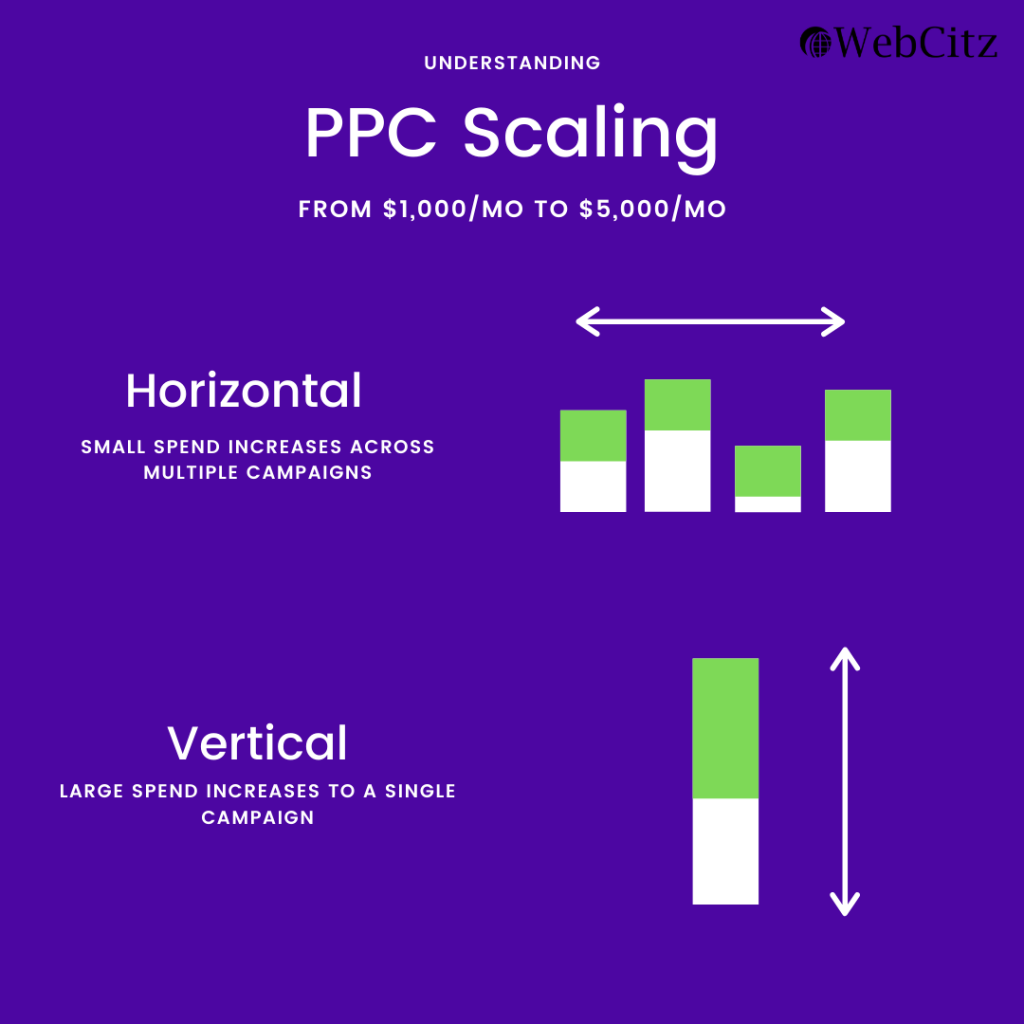
There are two types of scaling:
In this example we have an ad account that spends $1,000/mo and would like to increase to $5,000/mo.
- Horizontal scaling: Increasing the spend of 10 campaigns from $100/mo each to $500/mo each.
- Vertical scaling: Increasing the spend of 1 campaign from $1,000/mo to $5,000/mo.
So which do you choose? Horizontal scaling is the far better option 99.99% of the time. Here’s why.
- You avoid making huge budget changes, which is very important. Instead of increasing one campaign by $4,000, you’re instead increasing 10 different campaigns by $400.
See the difference?
Big increases in spend in a short period of time can lead to a campaign’s efficiency plummeting.
Let’s say your one campaign spending $1,000/mo and gets you 50 sales. You might be thinking, that’s awesome that means if I 5x my spend my sales will also 5x.. right?
Wrong! … Well, most of the time. - Ad Spend and Revenue don’t always scale linearly. Instead, spending more each day can result in diminishing returns and higher CPAs.
- You avoid putting all your eggs in one basket.
If you’ve ever run paid ads before you’ll know that performance fluctuates each and every day.
Now imagine your entire monthly PPC spend is in one campaign. That means Monday could be profitable while Tuesday could barely break even.
You’re leaving yourself open to high volatility and the possibility of losing money on some really bad days.
If instead, you spread your budget across multiple different campaigns you can almost avoid this entirely.
Some days ads will just perform poorly, that’s just how it goes. BUT… if 1 of your campaigns sucks and the other 4 perform average or better you’ll still make money no matter what.
4.) Continuously measure & optimize
It is the responsibility of the PPC management company to optimize campaigns for long term success and tweak what’s necessary until you’re left with an amazing campaign.
Almost every stage of your PPC ad campaigns can be optimized for better results.
- Test new target keywords to see how they perform compared to the old keywords
- Test new ad variations including headlines, text, images and even responsive ads
- Test manual ads against “smart” ads created by Google
- Test new display ad placements and audience targeting
- Test different bid strategies like target ROAS, target CPA and maximize conversions
- Test different landing pages, prioritizing headlines, visuals and call-to-actions
Set Clear Goals for Your Ads
Before you go testing all your ads like a mad PPC scientist it’s important you have clear goals and a way to measure success.
- First, determine which metric you’d like to optimize. Whether that be CTR, CPC or conversion rates.
- Second, determine which aspect of the campaign and funnel you’ll be split-testing.
Are you going to optimize the CTR of the search network ad?
Are you going to change headlines on the landing page to improve conversion rates?
You get the idea.
Test just ONE thing at a time to ensure you have common variables to compare data to. Slowly but surely you’ll tweak the PPC campaigns enough that you’ll have crafted a money-making machine.
When running new ads, Google has a cool new feature that makes running experiments easy. In Google Ads, head down to “Drafts & experiments” in the left-hand menu:

Then select New Experiment under Ad Variations.
PPC Management Pricing
There are two different costs that go into ppc management pricing.
The first is the time it takes to manage the account, test campaigns and works towards goals. The second part is the companies advertising budget that needs to be distributed throughout different campaigns.
The size of the website and ad budget can drastically change the amount of time it takes to manage the account.
For example, a local HVAC company with a basic lead form and an ad budget of $500/mo won’t take very much time at all to set up and manage. Whereas an eCommerce website with 15,000 products, shopping/search/display ads, retargeting campaigns, and a spend of $10,000/mo would require countless hours of testing and monitoring.
At a rate of $100/hour for PPC management, you can expect to spend anywhere from $800 to $4,000 a month. This does not include the ad spend.
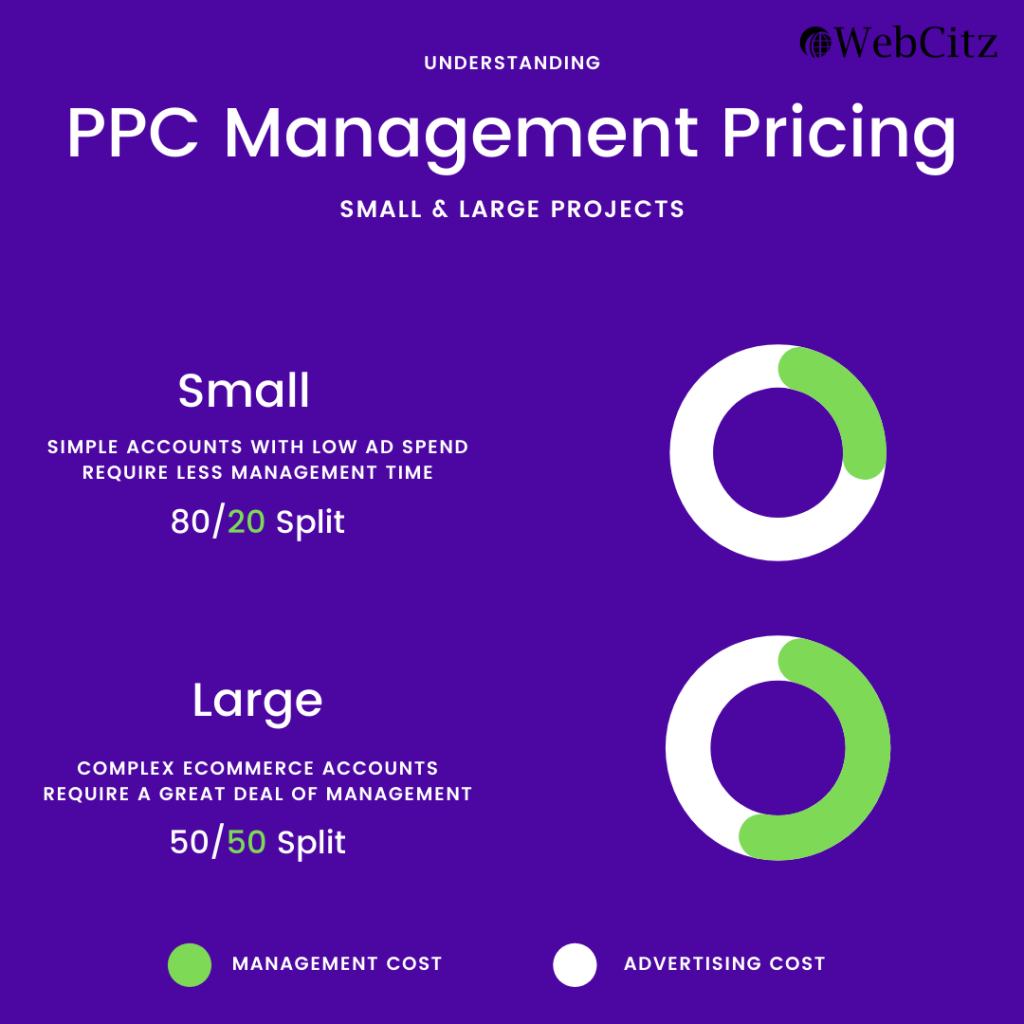
Final Thoughts on PPC Management
Profitable Google ads don’t get created on their own but instead are tested, nurtured, and closely monitored by a team of professional PPC management experts. With the almost unlimited amount of possibilities within the Google Ads platform alone, having a PPC management company can be what guides your company to online paid advertising success.
